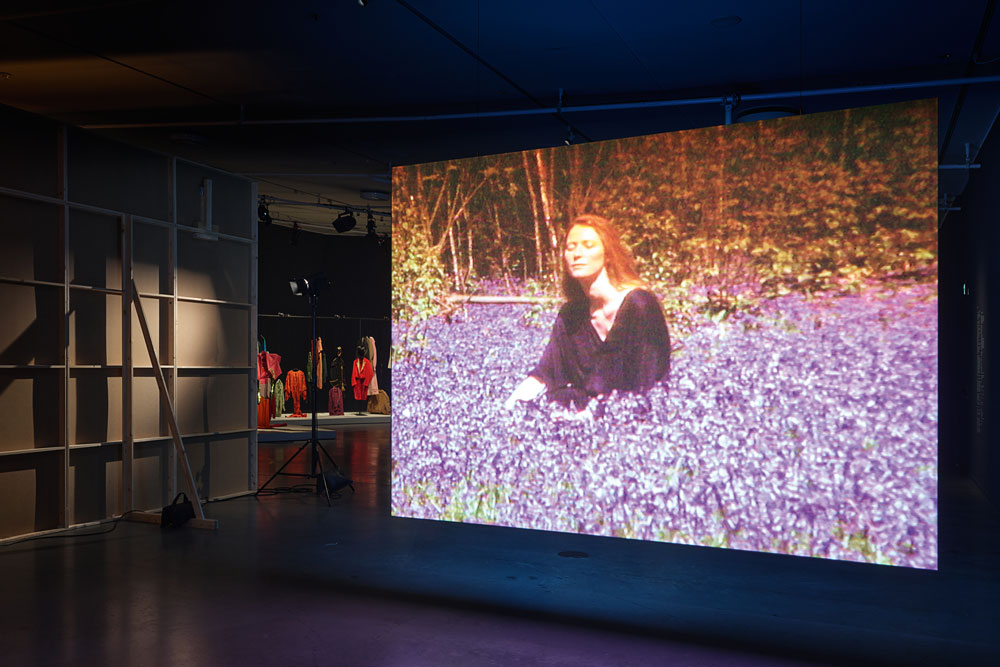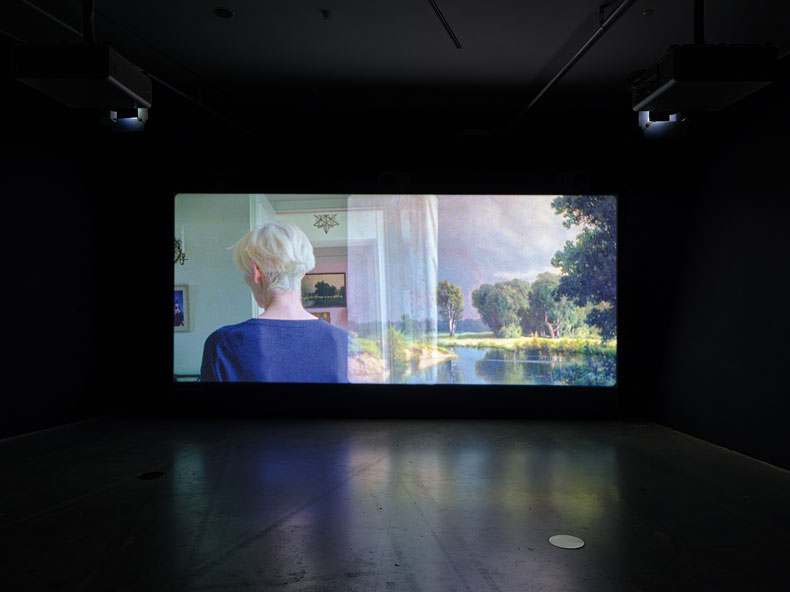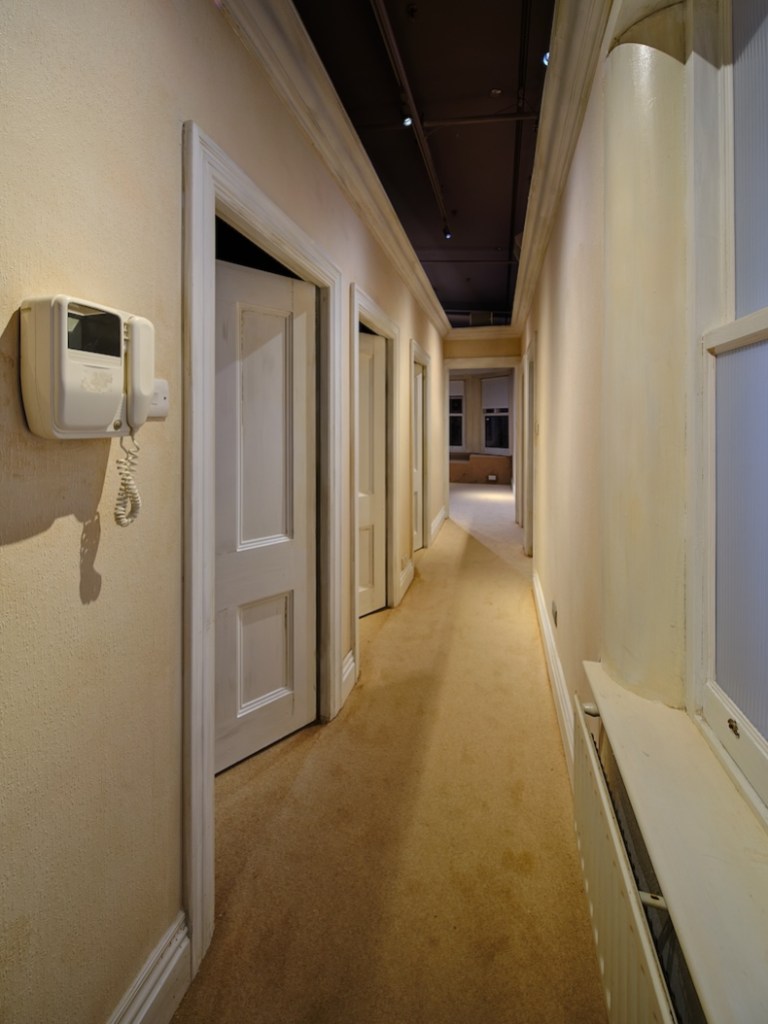From the November 2025 issue of Apollo. Preview and subscribe here.
It is 30 years since Tilda Swinton lay in a glass box in the Serpentine Gallery in London. The performance called The Maybe required Swinton to sleep, or pretend to sleep, for eight hours a day for seven days, while visitors peered at her or at other vitrines in the gallery, which the artist Cornelia Parker had filled with curios. She had subsequent lie-downs at the Museo Barracco in Rome in 1996 and at MoMA in 2013. By the time of the latter, the work was credited to Swinton alone and there were no other glass boxes to gawp at, but the greatest change since that first performance was in the degree of the actor’s fame.
Until her stint in the Serpentine, most of the films Swinton had been in were directed by Derek Jarman, who had died the year before. In these and in the best of the rest, the actor (let’s call her that for now) struck a consistently otherworldly note, even in Caravaggio (1986), in which she plays a Roman prostitute. In Friendship’s Death (1987), written and directed by Peter Wollen, she played the first of many aliens or angels; in Sally Potter’s Orlando (1992), she became the androgynous star of British art cinema. She has since become the androgynous star of international cinema, so much so that I’m sometimes more surprised when she isn’t in a film than when she is.

By agreeing to the making of ‘Tilda Swinton – Ongoing’ at the Eye Filmmuseum in Amsterdam and to enthusiastically taking part, the performer (to use the term she prefers) seems to be reckoning with her art-house ubiquity; she’s certainly trying to make it serve a greater purpose. In conversation with the exhibition’s curator, Vincent van Velsen, at the opening at the end of September, Swinton couldn’t have been more engaging or deflecting about what that purpose might be. After an approach from the museum’s previous director, she was ‘hesitant to the point of saying no for a couple of years’, changing her mind only when she stopped thinking of an exhibition as ‘something retrospective and finished and somehow dead’ – full of clips of old films, old posters and old costumes – and started thinking about what use it could be; more specifically, ‘What am I for?’
The answer she came up with was to present herself ‘as a witness to collective work in film-making’. For her, the Eye Filmmuseum exhibition is a group show, one for which she has enlisted some regular collaborators. It begins, of course, with the work of Jarman and continues, more or less chronologically, with each section devoted to a different partnership. So here, too, are works made about or featuring Swinton by the directors Joanna Hogg, Luca Guadagnino, Apichatpong Weerasethakul, Jim Jarmusch and Pedro Almodóvar, an installation-cum-performance piece by the fashion historian Olivier Saillard and portraits of Swinton dressed as her ancestors by the fashion photographer Tim Walker.

Those Scottish ancestors were undeniably posh – a fact neither Swinton nor the exhibition shies away from. In the characters she reincarnates for Walker, the military men make for the most successful portraits; in the two-channel film by Weerasethakul, the camera follows a silent Swinton around her house in the Scottish Highlands, taking in along the way art and furniture that looks as if it wasn’t bought yesterday, including a drawing by Sargent of ‘my friend Mrs Swinton’. (The full-length portrait in oils of Tilda’s great-grandmother Elsie hangs in the Art Institute of Chicago.)
Class isn’t entirely absent in the best piece in the whole show: the recreation by one of Swinton’s oldest friends, Joanna Hogg, of the mansion-block apartment in west London where Swinton lived by herself after university (reader of 2025, I wanted to weep!). Made with stage flats, the reconstruction consists of a narrow corridor – doors opening off on both sides – which leads to a sitting room. There is no furniture; this is a place of memory. The doors, left ajar, open to nowhere, but as you stop at each one, you can hear Swinton’s voice itemising what was in each room or summing up how she used to feel there. If this avoids being portentous, that’s largely down to the sound design, which keeps the voice low, weaving the different parts of Swinton’s narration into a hum and forcing the listener to eavesdrop at each door. And more than any of the other works, it feels like a piece that reflects its maker’s interests as much as those of Swinton’s.

There’s no denying the earnestness here, however artful the displays (the section devoted to Jarman is a masterclass in how to make two scraps of Super 8 seem compelling). Despite Swinton’s desire to show off the collaborative side of film-making, we seem to have swapped the director-as-auteur for the actor. What we don’t get is Swinton’s more raucous screen persona – the bolshie and bullying magazine editor she plays in Judd Apatow’s Trainwreck (2015) is an absolute hoot, and the Coen brothers have also found a more knockabout performer in Burn after Reading (2008) and Hail, Caesar! (2016). But there’s no denying the ambition on display here either. After its stretch in Amsterdam, the show is set to travel around the world. So, as well as art-house ubiquity, there will be ‘Tilda Swinton – Ongoing’, coming soon to a museum near you.
‘Tilda Swinton – Ongoing’ is at the Eye Filmmuseum, Amsterdam, until 8 February 2026
From the November 2025 issue of Apollo. Preview and subscribe here.